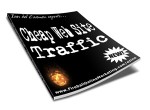
 License Type: Resell Rights
License Type: Resell Rights  File Size: 425,308 KB
File Size: 425,308 KB File Type: ZIP
File Type: ZIP
 SKU: 31368
SKU: 31368  Shipping: Online Download
Shipping: Online Download
Sample Content Preview
1 - WHAT IS THE BIGGEST MISTAKE MADE BY BEGINNING DIGITAL PHOTOGRAPHERS?
Trying to load 35mm film into the camera's SD card slot. But seriously, folks, the biggest mistake made by beginning digital photographers is assuming that this latest stage of photographic technology will correct *ALL* of the hurdles faced by generations of film photographers coming before them. Granted, advancements in sensing technology and lens control simplify much of the labor in setting up basic shots, but even the most advanced digital camera cannot suggest composition, dramatic lighting or mood behind capturing a striking photo.
2 - HOW DO YOU DECIDE WHERE AND ON WHAT TO SPEND YOUR MONEY ON A DIGITAL CAMERA?
THE RECOMMENDATIONS AND REVIEWS ARE NEARLY COUNTLESS AND USUALLY ONLY AGREE ON THE “TOP OF THE LINE” ITEM AS THEIR PICK. THERE HAS TO BE A BETTER WAY!
A better way, if you haven't done this already, is to start by making a list of your needs in a camera, especially the most elemental need: will you be carrying your new camera in a bag or a pocket? I have a small pocket camera that has many unique features, but doesn't have the all the "bells-and-whistles" that my full- sized SLR camera body offers. Determining simple needs like time-exposure, close-up, external flash control and portability can save you hundreds of dollars and help you avoid a bad case of buyer's remorse.
3 - HOW DO I DECIDE IS A PICTURE IS WORTH TAKING?
Before digital cameras became affordable for the consumer market, choosing what photos to take was a matter of finances and processing time. Everyone envied the contributing photographers for glossy magazines that had deep enough pockets to afford taking a hundred exposures to get that one keeper for the cover. Digital photography has made it economically feasible for the amateur photographer to feel more relaxed and experiment by taking numerous exposures and sort through them quickly without the long processing time. Should you take the photo? Take 3!
4 - HOW DO I GET THE WHITE BALANCE RIGHT?
For most situations the auto white balance on your camera does a good job, but there are times when it doesn't work as well. If your camera has preset white balance settings, you can work with them to get the result you want. If you still don't get the right shot, try to manually set the white balance. Change the camera settings to manual or custom white balance, then point the camera at something white or gray -- a white/gray card or t-shirt -- filling the screen completely with that card or shirt, and pressing the White Balance button on your camera (if you have one). Make sure the white that you focus on is not in the shadows, and is illuminated by the artificial light of the room. If you can't get the results you want, try using the raw file format available on some advanced cameras. This takes the pictures without any automatic enhancements. The pictures can be adjusted in your photo program later.
5 - HOW DO YOU TAKE CLEAR SHOTS FOR INDOOR SPORTS?
The main key in shooting sports is speed. You MUST have a quick shutter speed in order to freeze the action. You can get try it with a slower shutter speed, but you will have follow the subject with the camera as you're taking the picture, and this can lead to very unpredictable results. To get the best results, set the ISO to the highest setting -- 400-800. That's like using fast film in a 35 MM camera and works better in low lighting. Action photos are difficult because of the delay in the shutter release and in recording the picture. If your camera has a rapid fire mode, then you'll want to set it to that.
6 - WHAT ARE THE ADVANTAGES/DISADVANTAGES OF RAW VS. JPEG FORMAT PHOTOGRAPHS?
When you take a picture in a jpeg format, the camera does things to it before it's saved. The image sensor converts analog to digital, adds any specifications that were made, like white balance, sharpening, contrast, image effect, digital zoom, etc. After all of that is done, the image is saved to the memory card.
In a lot of cases, that is the best way to go, because the camera is very smart about interpreting the surroundings and adding the right specifications. A raw file format is the unprocessed data file that is captured by the camera's image sensor before any specifications are applied. This can be very helpful to have when the camera doesn’t interpret the light or the images the way you want it to. If you don't get the results you want with the settings you've made for a picture, you can take a raw picture and not have anything "added" to the image. The picture can then be edited in your photo editor to get the look that you want, rather than having to adjust from the settings made to a jpeg image.
In the picture below, the top photo was taken in auto jpeg mode and the bottom picture was taken as a raw format. The top has better lighting but less detail. The bottom is darker but has greater detail.
7 - WHAT ARE THE BEST SETTINGS FOR LOW LIGHT/NIGHTTIME CONDITIONS?
A setting of ISO 800 works best in low lighting situations but given the lighting sources, could increase the background noise. A tripod or a very steady hand helps when shooting at a slower shutter speed in low light, also. Some helpful settings to try are:







